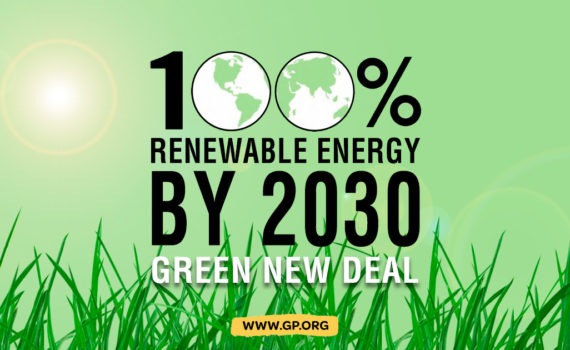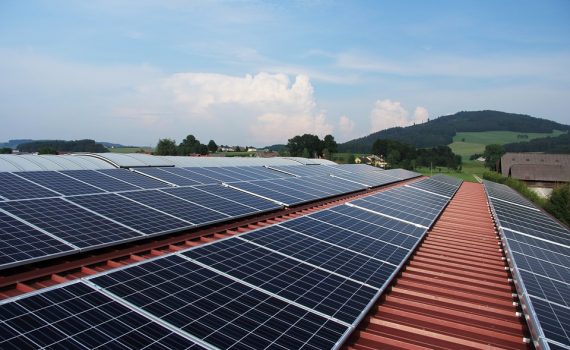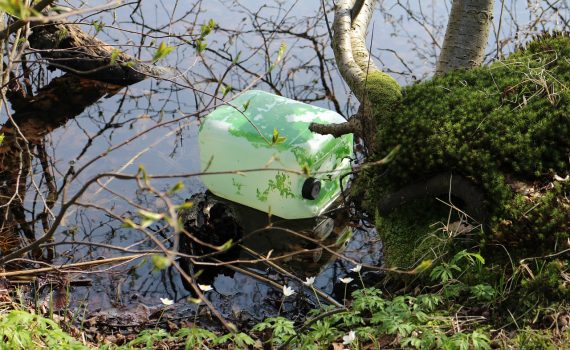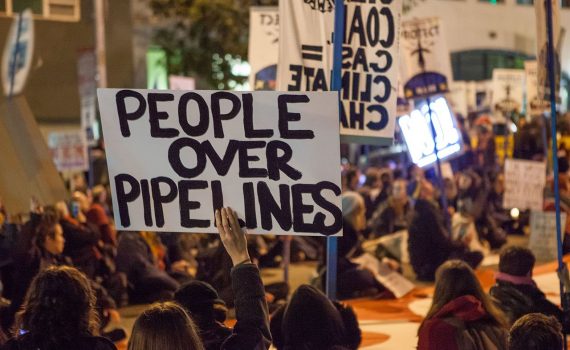We must remove each and every ton of CO2 emitted into the air
Category : blog , Divestment , Economy , Energy , Environment , Politics
Geordie Zapalac, October 3, 2019 (revised Jan 22nd 2020)
It has been inspiring to witness many people take to the streets to demand action on the climate crisis, and to direct attention to the deep links between the climate crisis and social injustice. Climate activism in the United State has most recently been focused on implementing Congressional preamble H. Res. 109 called the “Green New Deal” that addresses both the need to reduce CO2 emissions and the needs of marginalized communities after the required shift in the energy system. A more comprehensive Green New Deal had first been a central part of the Green Party’s platform, in 2010 by Howie Hawkins and in 2012 and 2016 with the Jill Stein presidential campaign. For this discussion the “Green New Deal” or “GND” will refer to H. Res. 109.
The GND calls for the transformation of our energy system to reduce CO2 emissions “to the extent technologically feasible.” It specifically recognizes the November 2018 report by the Intergovernmental Panel on Climate Change (IPCC) that asserts that CO2 emissions must be reduced 40-60% by 2030 and 100% by 2050 in order to prevent the average global temperature from rising more that 1.5 oC above the preindustrial temperature. It also recognizes a need to remove greenhouse gases from the atmosphere “through proven low-tech solutions that increase soil carbon storage, such as land preservation and afforestation.” But does the GND effectively confront the climate crisis, or is it becoming a panacea that distracts us from the real action that is now necessary to save the planet?
Since the industrial revolution the CO2 concentration in the air has increased by about 50% and the global average temperature has increased by 1.1 oC.(1) What have been the consequences of 1.1 oC of warming so far? We have seen the loss of glaciers, the accelerating loss of ice from the Greenland ice sheet, an almost complete loss of sea ice from the Arctic, accelerating ice loss from the Antarctic, devastating and lethal heat waves and wildfires including vast fires in the boreal forests of the Arctic, catastrophic floods, a significant increase in the frequency of category 4 and 5 hurricanes, significant losses of agricultural yields, the death of coral reefs, a 20 cm rise in sea level, and a dramatic loss of life and biodiversity across the planet.
Is the temperature increase of 1.1 oC that we have experienced so far really acceptable? The Greenland ice sheet for example is not going to stop melting and will eventually cause 7 meters of sea level rise – would that be acceptable? And if not, then why should we regard the 1.5 oC temperature rise recommended by the IPCC as acceptable? Haven’t we exceeded our “carbon budget” already? Furthermore the IPCC has not been entirely truthful: they have chosen to simply ignore inconvenient observational data and to report instead the results of their climate simulations. It is well known that these simulations do not adequately account for several feedback mechanisms now in play in the Arctic, therefore they catastrophically fail to predict even the most basic observational data such as the rate of sea ice loss in the Arctic (2) or the climate sensitivity to CO2 measured from ice core samples.(3) Discarding observational data in favor of computer simulations should never provide a basis for policy decisions.
The higher the concentration of CO2 in the air, the higher the global average temperature of the earth, this is a consequence of basic physics.(4) The climate sensitivity measured from ice core samples indicates that if the 50% increase in atmospheric CO2 concentration since preindustrial times is sustained, it will eventually increase the global average temperature by 3.5 oC.(3) This implies that another 2.4 oC of warming is yet to come, if the CO2 concentration in the atmosphere is not reduced. Today 40 gigatonnes per year of CO2 is emitted into the atmosphere worldwide, sinking us ever deeper into carbon debt.
It is important to realize that the carbon already released into the atmosphere is sufficient to eventually destroy much of the life on the planet, whether due to climate change or ocean acidification, and that this carbon will not be affected by any program we put in place to restrict emissions going forward, including the Green New Deal.
Will planting trees save us? By all means we should plant trees – it can only help. But it takes decades for a newly planted forest to begin removing significant amounts of CO2 – assuming that the forest does not burn down during this period thanks to climate change – and we do not have decades to wait.
The only remaining solution that averts catastrophe appears to be the removal of CO2 directly from the air by chemical means, a technology called “Direct Air Capture” or DAC. There are currently four commercial undertakings for DAC: Carbon Engineering, Climeworks, Global Thermostat, and a collaboration between Silicon Kingdom Holdings and Arizona State University. Ideally this list will expand significantly in the future with additional startups working on improving the technology to build a competitive carbon capture industry. The existing companies currently anticipate costs of roughly $100 to remove one tonne of CO2 directly from the air at scale.(5) This cost should be regarded as an upper bound after a few years of field experience with DAC at scale: convincing arguments predict that the cost of DAC will probably drop to $30 per tonne.(6) For the remainder of this discussion let us assume the conservative cost of $100 per tonne.
We may now answer the question: What is the hidden cost of emitting 1 tonne of CO2 into the atmosphere? It is not necessary to somehow account for the current or future damage from floods, hurricanes, droughts, wildfires, or sea level rise that is caused by climate change. Nor is it necessary to assign a price to the human lives taken by climate change, or a price to the ongoing loss of biodiversity; both of course are priceless. The hidden cost of emitting 1 tonne of CO2 is precisely the cost to remove 1 tonne of CO2 directly from the atmosphere: $100 per tonne. When fossil fuel prices are increased to account for this hidden cost, then technologies for energy conservation, renewable energy, battery storage, and electric vehicles will become more competitive in the marketplace. It is likely that we will continue to burn fossil fuels, but we will burn significantly less fossil fuels and we will burn them responsibly because the cost of removing the emitted carbon as a ‘carbon removal tax’ will be factored into the cost of doing business for the fossil fuel industry.
We will need to remove significantly more CO2 than we emit to avoid catastrophic climate change, but for the remainder of this discussion let us explore the economic consequences of a carbon removal tax, intended to bring us immediately to zero net emissions so that at least we are not making the problem even worse. It is important to emphasize that a tax of $100 on one tonne of emitted CO2 must be used to remove one tonne of CO2 from the atmosphere: it cannot be diverted to any other cause however admirable such as research on wind turbines, adaptation to sea level rise, climate education for K-12 schools, etc. If the tax proceeds are not directly used to remove the emitted CO2 from the atmosphere then we will have solved nothing: climate physics makes no allowance for alternative causes with good intentions.
How would the U.S. economy respond to a carbon tax of $100 per tonne? The reader may keep in mind that there are already four countries that have a tax in excess of $50 per tonne of CO2 (tCO2) and their economies are doing fine (7): Sweden ($133/tCO2), Switzerland ($87/tCO2), Finland ($65/tCO2), and Norway ($53/tCO2). The U.S. consumer would experience a tax of $100/tCO2 as an inflation of prices on most goods and services. Probably all prices would be at least slightly affected since in general the production of goods requires energy, but the most direct rise in prices would be for the direct energy costs of gasoline, electricity, and gas heating. We will review each of these costs to estimate its impact on the consumer and its contribution to the increase in the inflation rate, and then compare the total increase in the inflation rate to the inflation rate that we experience today.
- Burning a gallon of gasoline releases about 10 kg of CO2 which would be taxed at $1.00. This increases the average price for a gallon of gasoline ($4.00) by 25%. The average household spends $368 a month on gasoline (8) to purchase 1104 gallons of gasoline per year, so they would be taxed $1104 each year to remove the CO2 from the air.
- The average cost of electricity is 12 cents per kWh.(9) In the U.S. each kWh of electricity produced releases on average 0.5 kg of CO2.(10) This would incur a carbon removal tax of 5 cents, or a 42% increase in the electricity bill. The average annual electricity bill is $1340 which incurs a tax of $562 to remove the CO2 from the air.(11)
- Each therm of natural gas releases 0.0053 tonnes of CO2.(12) The average household burns 755 therms per year (13) releasing 4.0 tonnes of CO2 into the atmosphere which would be taxed at $400.
The total average annual tax on the direct use of energy is therefore $2066. Because the average U.S. household spends $60,061 per year (14), this additional spending represents an increase in the inflation rate for the average household of 3.4%. Historically, increasing energy costs have had only a slight effect on the inflation of prices that are not direct energy costs.(15) We will use 7% as a conservative estimate of the total inflation caused by the carbon removal tax: a doubling of the inflation due to the direct costs of energy.
There are four important comments about the inflation rate due to the carbon removal tax:
- We must compare this inflation to the true rate of inflation not the Consumer Price Index (CPI) of about 2% that is typically quoted by the press as “inflation.” The CPI is calculated in secret and assumes that consumers will substitute less expensive goods when prices rise: the CPI therefore does not account for the actual rise in prices. Its purpose is to allow the government to avoid indexing government programs to the true inflation rate which is really 7% to 13%.(16)
- The carbon removal tax only increases the inflation rate in the year that it is implemented: it is a one-time increase on energy prices, whereas we suffer under the true inflation rate every year.
- In many cases the carbon removal tax may be avoided, for example, by driving an electric vehicle, or weatherproofing a house, or installing solar panels. No such options exist for avoiding the true inflation rate, which is created by the banking system and benefits only the extremely wealthy.(17)
- There will be a need to address the social justice impact of this increased inflation on low-income people and communities, Although not discussed here, addressing equity will be an important part of implementing any tax.
To summarize, H. Res. 109 Green New Deal cannot possibly avoid catastrophic climate change because it minimizes the significance of the carbon already released into the atmosphere and only calls for reducing emissions “to the extent technologically feasible.” We must unequivocally demand the removal of the excess CO2 in the atmosphere. It will cost at most $100 to remove one tonne of CO2 from the air after a few years of field experience while DAC is being deployed at scale. The hidden cost of emitting one tonne of CO2 is precisely the cost of removing one tonne of CO2 from the air. This leads immediately to a carbon removal tax of $100 per tonne of CO2 in order to reduce net emissions to zero. This cost would be experienced by consumers as an increase in the inflation rate of at most 7% and mostly only the first year that the carbon tax is implemented. This inflation rate should be contrasted with the current inflation rate of about 10% that we must endure today,(16,18) year after year.
Therefore a carbon removal tax is a reasonable, an accessible, and – most importantly – a responsible first step towards avoiding a climate catastrophe.
Geordie Zapalac is a physicist working in Santa Clara, CA in photovoltaics. He is an active member of the Green Party of Santa Clara County.
References
- https://en.wikipedia.org/wiki/Global_warming
- Peter Wadhams (2017), A Farewell to Ice. Oxford University Press, pp. 88-9.
- J. Hansen et al. (2008). Target Atmospheric CO2: Where Should Humanity Aim? The Open Atmospheric Science Journal, 2, pp. 217-231.
- Peter Wadhams (2017), A Farewell to Ice. Oxford University Press, pp. 47-52.
- https://www.reuters.com/article/us-climatechange-carbon/scientists-say-cost-of-sucking-carbon-from-thin-air-could-tumble-idUSKCN1J325H
- K. S. Lackner (2009). Capture of carbon dioxide from ambient air. Eur. Phys. J. Special Topics, 176, pp. 93-106.
- https://ourworldindata.org/carbon-pricing-popular
- https://money.cnn.com/2011/05/05/news/economy/gas_prices_income_spending/index.htm
- https://www.npr.org/sections/money/2011/10/27/141766341/the-price-of-electricity-in-your-state
- https://blueskymodel.org/kilowatt-hour
- https://smartasset.com/personal-finance/how-much-is-the-average-electric-bill
- https://www.epa.gov/energy/greenhouse-gases-equivalencies-calculator-calulations-and-reference
- https://www.howellsac.com/blog/cost-of-gas-heat-vs.-electric-heat
- https://www.gobankingrates.com/saving-money/budgeting/how-much-average-american-spends-daily/
- https://www.cbo.gov/system/files/2018-10/07-21-energy-dist.pdf
- ttps://www.businessinsider.com/if-people-knew-the-actual-inflation-rate-it- would-crash-the-economy-2016-8
- Many classic texts are devoted to this topic. A clear and concise introduction is provided by “The Case Against the Fed” by Murray N. Rothbard.
- https://medium.com/@bgschust/true-inflation-exceeds-7-8dced84ae05





